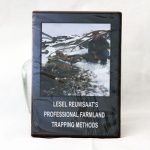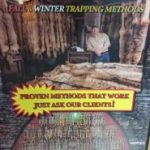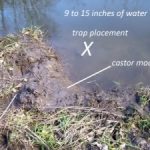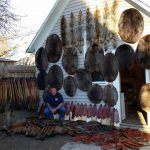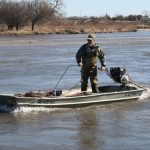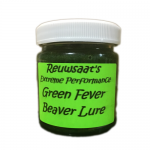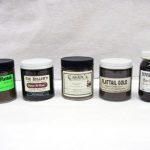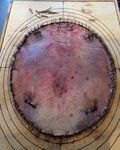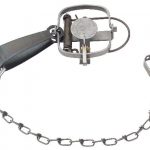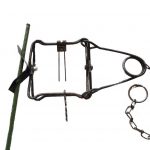Nebraska’s own Joe Jack was featured in an article that appeared in the Grand Island Independent by author Jeff Bahr. Here is a link to the story. I have also reprinted the story below (with permission). Jeff Bahr can be reached at Jeff.Bahr@theindependent.com. Joe is a lifetime member of The Nebraska Fur Harvesters.
Wood River man has enjoyed trapping for 70 years

WOOD RIVER — When Joe Jack was 12, his brother-in-law got him started trapping muskrat and mink. Seventy years later, Jack is still trapping.
Jack, who lives in Wood River, worked in education for 40 years. Twenty-seven of those years were at Wood River Rural Schools, where he was a guidance counselor.
Although he spent his education years inside, Jack loves to be outdoors. While he’s out trapping, he enjoys seeing small birds, rabbits, squirrels and wild turkeys.
Through the years of rising and falling fur prices, Jack has never missed a year of trapping.
He has learned a lot about the tendencies of animals. But the education continues. He learns something new about wildlife every year.
A native of Loup City, he graduated from Kearney State College in 1958. While there, he participated in football and track.
When he was in college, he ran mink lines on the Loup and Platte rivers. With the money he earned, he paid almost all of his college expenses.
After he entered the working world, Jack checked his traps before going to school in the morning.
“All my trapping for all those years till I retired was by flashlight in the morning before school,” he said.
On the weekends, he could tend to his traps during daylight hours.
“But otherwise it was getting up at 4 or 5 o’clock in the morning and running traps before school.”
Jack, 82, traps beaver, muskrat, badgers, fox, coyotes and raccoons.
He sells the pelts through North American Fur Auctions, which is based in Toronto.
“It’s a sport and it’s a challenge,” he said. “A lot of people say that it’s brutal and the animals don’t have a chance. And boy, that’s not true. Coyotes are really smart, and so are fox. You have to be able to fool them to be able to trap them or snare them.”
The toughest animal to trap is the coyote.
“You have to do a number of things right in order to be able to catch foxes.” But to trap a coyote, “you’ve got to do everything right.”
“Coyotes will kill a fox because they’re in competition for food,” he said.
A coyote “usually can’t flat outrun a fox.” But coyotes can often bring down a fox when two of them team up. One coyote will start out chasing a fox, and a second coyote — fresh and ready to run — will take over when the fox tires.
To catch a coyote, you’ve got to dye and wax the trap first, so that the animal won’t detect any human odor.
In addition to trapping, Jack likes to hunt for pheasants, grouse, quail, deer and turtle dove.
Until 1996, he also bought fur from other people.
“I do a lot of snaring nowadays, because it’s very hard for me to get up and down at 82. I don’t just get down on my knees and just pop back up. I’ve got to have something to get ahold of to lean against and get up.”
Before coming to Wood River in the fall of 1971, he taught in Spencer, Farragut, Iowa, and Elm Creek.
Along the way, he got a master’ degree in guidance and counseling.
For 13 years, he was a head football coach. He also coached track and taught driver’s training. In his last five years at Wood River, he coached cross country. He retired in 1998.
Nancy, his wife of 59 years, died in September of 2017.
They had four kids, three of whom are still alive. A son in Omaha, Greg, often comes to hunt and trap with him.
Jack also receives plenty of assistance from his yellow lab, Lady Hunter.
Jack obviously loves trapping.
“A lot of it’s for fun,” he said. “But some years when we had four little kids and one teaching income, trapping money bought all of our Christmas presents and stuff like that.”
Right now, coyotes fetch the best prices.
Some years, when prices are high, Jack makes money at it. But last year and this year won’t be profitable.
Critics thinks trappers “just go out and slaughter” animals, Jack said.
But they don’t know the whole story. Traps have evolved, he said. So much research has been done that traps are more humane than ever.
In addition, regulation is strict. Most traps have to be checked every 24 hours. Trappers have to put their nametags on each device.
Snares, Jack said, have two kinds of locks. There are kill locks and there are relaxing locks.
Jack usually uses relaxing locks because he inadvertently catches a dog once in a while. A relaxing lock makes sure those dogs get out OK. Dogs are accustomed to wearing collars and leashes, so they won’t fight the snare. When the dog stops applying pressure, the snare relaxes, and the dog survives.
Jack does use a kill lock when he’s trapping in remote parts of the Sandhills, where dogs are less likely to turn up.
There are more raccoons, coyotes and fox around now than ever, said Jack, who’s a lifetime member of Nebraska Fur Harvesters, the National Trappers Association and Fur Takers of America.
Most trappers, he said, are upstanding people. They are great conservationists and they love animals, he said.
Money from taxes and licenses goes toward the conservation of wildlife, he said.
Jack loves watching baby foxes and raccoons at play. “I’ve even raised a few baby raccoons.” Eventually, he turned them loose where there was no chance he would trap them.
If certain types of animals become too abundant, their numbers will be curbed by the forces of nature.
When there are too many coyotes around, mange appears. Raccoons might get distemper. The effect on those animals can be brutal. In other words, the overpopulation problem is left up to Mother Nature.
“And what Mother Nature does to them is not pretty — ever,” Jack said.

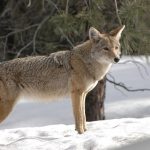 If you follow wildlife in the news, you can’t escape the stories. Cities in California are struggling trying to manage the problem of cohabitating with wild canines. Coyotes spotted in the park, coyote grabs dog, coyote bites Hastings, Nebraska boy…wait…what?
If you follow wildlife in the news, you can’t escape the stories. Cities in California are struggling trying to manage the problem of cohabitating with wild canines. Coyotes spotted in the park, coyote grabs dog, coyote bites Hastings, Nebraska boy…wait…what?
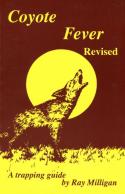 e Fever. Ray knows the coyote like few do. The book is very much to the point and goes through the equipment and sets you need to be successful.
e Fever. Ray knows the coyote like few do. The book is very much to the point and goes through the equipment and sets you need to be successful.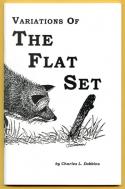
 Not only are these entertaining to read, but I also use these books as reference manuals. When things get slow on the line, I can always find a new set to use from these books. The print is small in these books and Dobbins packs a massive amount of content in them.
Not only are these entertaining to read, but I also use these books as reference manuals. When things get slow on the line, I can always find a new set to use from these books. The print is small in these books and Dobbins packs a massive amount of content in them.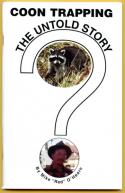
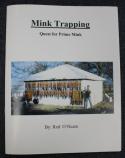 He is quite a character, and very interesting to read and to listen to. Red wrote Coon Trapping – the Untold Story and Mink Trapping – The Quest For Prime Mink. If you want to become a better coon and mink trapper, this is a good start.
He is quite a character, and very interesting to read and to listen to. Red wrote Coon Trapping – the Untold Story and Mink Trapping – The Quest For Prime Mink. If you want to become a better coon and mink trapper, this is a good start.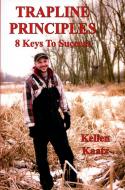 Trapline Principles, 8 Keys To Success by Kellen Kaatz. Not only is Kellen a super helpful guy, but he is also a very knowledgeable trapper and lure maker. Upon finishing this book, you will understand what Kellen believes is the 8 biggest things you need to work at to be a good trapper. An excellent book for making yourself a better trapper.
Trapline Principles, 8 Keys To Success by Kellen Kaatz. Not only is Kellen a super helpful guy, but he is also a very knowledgeable trapper and lure maker. Upon finishing this book, you will understand what Kellen believes is the 8 biggest things you need to work at to be a good trapper. An excellent book for making yourself a better trapper.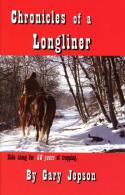 Gary talks of the hardships faced on his ranch, and the good years during the fur boom. Gary documents his travels to conventions, his lure making adventures, and battling the harsh winters in North Dakota through the years.
Gary talks of the hardships faced on his ranch, and the good years during the fur boom. Gary documents his travels to conventions, his lure making adventures, and battling the harsh winters in North Dakota through the years. This is one I watch at the beginning of the season every year. Mark is a high energy guy and understands both trapping and the coyote itself. This dvd was filmed in Nebraska as well which makes it close to home.
This is one I watch at the beginning of the season every year. Mark is a high energy guy and understands both trapping and the coyote itself. This dvd was filmed in Nebraska as well which makes it close to home.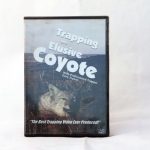 Gary is a cowboy from North Dakota and his trapping experience is vast. Gary is a man of few words, but when he talks, one is inclined to listen. The first 10 minutes or so of that dvd, Gary talks about family units and habits of the coyote, and the information presented there is well worth the price of the dvd.
Gary is a cowboy from North Dakota and his trapping experience is vast. Gary is a man of few words, but when he talks, one is inclined to listen. The first 10 minutes or so of that dvd, Gary talks about family units and habits of the coyote, and the information presented there is well worth the price of the dvd.